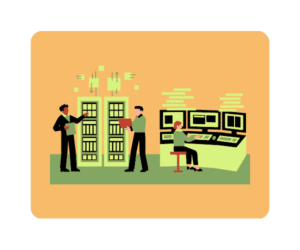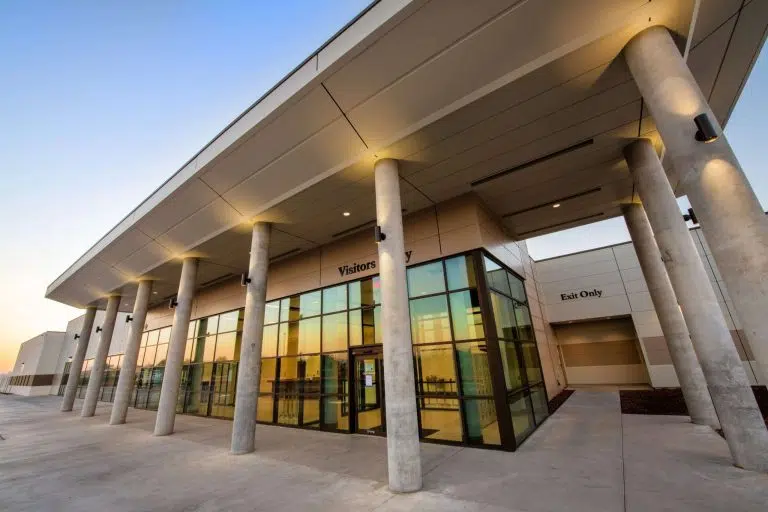
Remote Work and the Courts: Oil and Water? OR Chocolate and … Well, Anything!
Remote work, telework, telecommuting, virtual work – different descriptions of work concepts and environments that grew during “the Covid years.” All involve some version of working outside your physical office location. For courts, this also included remote or virtual hearings, trials, mediations and case conferences. Embracing “new” within the traditional halls of justice can sometimes be challenging. However, remote work and virtual hearings were (perhaps) unexpectedly effective.
Courts are unique institutions that embrace precedent. Tradition is valued – prior decisions are relied upon and honored. Valuing precedent can be good – providing a strong, stable foundation for a democratic society. Adherence to precedent often means courts are typically not swaying back and forth in response to external issues and occurrences. However, adherence to precedent, at least from an operations perspective, can result in courts being slower to change and slower to embrace and adapt to new concepts, such as remote work, virtual hearings and conferences.
Questions remain about the future of remote/virtual work, such as:
- How will remote work be structured?
- What will it look like?
- Who will work remotely? and
- To What extent will remote work be applied in different businesses or governmental entities?
However, one question – will remote work continue to exist? – has been answered. And the answer is a resounding “yes.”
“Now that companies have built the framework – and experienced the cost and time savings associated with it – there’s no real reason to turn back.” Mark Lobosco, VP of Talent Solutions at LinkedIn. 
Many factors will determine the viability of remote work, including industry, location, job description and type of job. For courts, remote work will continue to exist … but to what extent? The mission and operation of courts is unique, requiring distinct considerations for the nature of remote work. So … let’s look at remote work within the courts – will it be a good mix and how will it impact court operations?
Key Considerations for Court Managers and Administrative Judges When Developing Remote Work Strategies and Procedures for Courts
This is the first major takeaway that needs to be emphasized: One size does NOT fit all. Remote work within each court, courthouse and courtroom will be different. The goal is to develop the best remote work environment that will meet the mission and structure of your court.
When I served as Presiding Judge of my Circuit Court, major courthouse flooding, which destroyed multiple courtrooms, jury assembly rooms and judicial, administrative and clerk offices, and workspace re-construction led to multiple remote or virtual work policies, procedures, capabilities and structure. Then, round two arrived in the form of Covid – resulting in more changes to the remote work environment we had already started. Those experiences helped me to develop an understanding of issues to consider regarding court operations and remote work.
As we continue to emerge from (and learn to live with) Covid, courts are more deliberately evaluating the long-term future of remote work and virtual court technologies. Here are some important topics to consider and practical questions to ask yourself as you continue to evaluate remote work in your court’s work environment.
Remember “who”, “what”, “where”, “when”, and “why” we learned in school? It turns out those questions are still valid! Let’s start with those … and the bonus, “how”:
Topic One: Confidential Data and Records
Ask Yourself This:
- WHERE (and HOW) will you keep confidential data and records?
- HOW will you protect data transmitted and the privacy and confidentiality of court records?
- WHAT policies and protections are needed to protect these records and HOW will you enforce those policies?
Consider This:
Most (but not all) court records are public. Confidential information is included in court records, even public records. Although most court records are electronic, paper still exists and is used in some situations. Remote work means that confidential information or records will be accessed by employees outside the courthouse as well as transmitted to/from remote workers. Think about it – personal and confidential court information will potentially be open for viewing in the living rooms and kitchens of remote employees. Developing strict policies and guidelines to maintain confidentiality is critical.
Topic Two: Culture and Community Impact
Ask Yourself This:
- HOW does the concept of remote work fit into your court’s culture and community?
- HOW does it enhance your court’s mission and service to your constituents?
- WHAT is the perspective of your constituents and HOW is access impacted?
Consider This:
Courts are public service entities. Evaluating remote work from an internal process perspective is important – but don’t stop there – it’s also important to consider the perspective of citizens, litigants and attorneys and how they will interact with and have access to the court. Decisions should be driven by fulfillment of the core mission of your court.
Topic Three: Identify the Purpose, Weigh the Cost, and Evaluate the Efficiencies
Ask yourself this:
- WHY are you creating a mechanism for remote work?
- WHAT efficiencies, if any, are gained?
- WHAT are the benefits – not just to courts, but to your constituents?
Consider this:
Rather than creating remote work opportunities because it is “the latest thing,” consider the benefits and potential detriments to remote work – do the benefits outweigh the negatives? Courts have hiring and employee retention challenges. Is remote work a perk, an option … or a necessity? Review your employee policies and procedures – are they consistent with remote work or do they need to be updated? Does remote work enhance the court’s core mission of providing the administration of justice?
Topic Four: Consider the Cost of Remote Work and Its Impact on Staff
Ask yourself this:
- WHAT are the direct and indirect costs of remote work?
- HOW do you manage the remote employees vs. onsite staff?
- HOW can you monitor and promote productivity for remote workers?
- WHAT impact will partial remote work have on overall staff morale?
Consider This:
Remote workers won’t have to travel to the courthouse for work, won’t have to eat out for lunch and perhaps won’t have to spend as much on work clothes. Your employees will be aware of this. Should (and can) pay and/or benefits reflect these realities? Should a premium be paid for in-person work? How will your court handle any perceived inequities? There can be multiple legal issues and implications that must be considered.
Also think about the impact on morale or motivation for staff, including employees who are required to work in the courthouse as they see co-workers working remotely. How will you keep staff motivated? How will you gauge productivity for onsite and remote workers – will it be the same methodology? Can the same processes apply to remote workers? It’s important to beware of and document different standards or processes between in-person and remote work.
Topic Five: Identify the Roles and Positions that are Best Fit for Working Remotely
Ask yourself this:
- WHO amongst your staff will have the opportunity to work remotely?
- WHAT jobs and job descriptions are best suited for remote work?
Consider this:
As you reflect on how you’ll manage remote employes and evaluate their productivity, also give thought to which employees or positions are better situated to work remotely. What are the criteria for managers to determine which employees are allowed to work remotely?
Examine job descriptions and responsibilities – some can be performed remotely while others can’t. Is the job category one that has a need to be physically located in the courthouse interacting with the public versus performing more of a necessary back-of-house function for the court? For example, front desk clerks and court division staff typically have more face-to-face interaction with the public as opposed to a clerk processing electronic documents. Consider how decisions will be made as to which individual will have the opportunity to work remotely. Consult with your HR department or advisor.
Topic Six: Envision How Remote Work Will Impact your Court’s Operations and Day-to-Day Activities
Ask yourself this:
- HOW will remote workers impact your court processes, procedures, rules, court hearings, docketing and case management?
- WHAT operational policies or processes will need to be evaluated and/or updated to prepare for a transition to remote work?
- If you create remote work environments, WHAT and WHO will the public
see or speak to when they enter your courthouse and courtrooms?
Consider this:
When considering how remote workers will impact court processes, it’s easy to think, “we’ll still have employees in the courthouse so nothing will change”. However, many operational processes are interrelated and cross-departmental, meaning there must be consistency between departments. Existing processes should be evaluated to see if there are changes to be made because of allowing remote work.
All operational processes should be evaluated to ensure compatibility with remote work. For example, if specific clerks have responsibility for specific cases or dockets, do they need to be available in the courthouse when those dockets are held? Can a “partner-ing” work relationship be developed with an on-site employee so in-person coverage is always available?
It’s also important to consider the necessity for the public to interact with court staff – how will that be impacted by remote workers?
Topic 7: Determine the Financial Impact on Your Court and/or County
Ask Yourself this:
- WHAT are the financial costs to your Court and/or County?
- WHAT are the IT costs and implications associated with remote work?
- HOW will your court’s infrastructure support remote work and how will it be maintained?
- WHAT are the costs associated with supporting virtual hearings?
Consider this:
In addition to the personnel issues raised above, what are the IT costs and implications? Will you need new equipment? Will standardized computer equipment be provided to remote workers? Does your court have the current and future required infrastructure to support remote work? How will court equipment be maintained, updated and protected from hacks? Any equipment provided to employees is public. Employees might decide to use court equipment for personal purposes – what are your policies currently and do they need to be changed?
Costs for supporting virtual court hearings should also be considered. Although many courtrooms were updated during Covid to support virtual hearings, do you have the capability to expand that access to all courtrooms. What is the underlying internet capacity, bandwidth and access throughout your jurisdiction? Although not directly part of this blog (stay tuned!), public access to virtual court hearings can be challenging and comes with a cost.
Final Takeaways
So, what are the answers? There seem to be more questions than answers. There are some best practices and some commonality of answers – but the definitive answers will be unique for your court. Answers to these questions must ALWAYS be in the context of protecting the legal rights of litigants, providing full and equal access to the courts and promptly and fairly providing justice for all.
Development of an efficient and effective remote work environment doesn’t just happen – it involves thoughtful planning. In some respects, the pandemic forced (or perhaps accelerated) remote work environments. Now is the time to engage in a more deliberate and holistic operational evaluation regarding the future of remote work in the courts.
About the Author:
Judge David Byrn (Ret.): Prior to joining CGL’s team of justice consultants, Judge Byrn served 13 years as a Circuit Court Judge in the 16th Judicial Circuit of the State of Missouri. In addition to his trial court responsibilities, he also served as Presiding Judge where he was responsible for all court operations, management and planning. Prior to his appointment to the bench, he practiced law for 27 years.
Contact info@cglcompanies.com for more information





